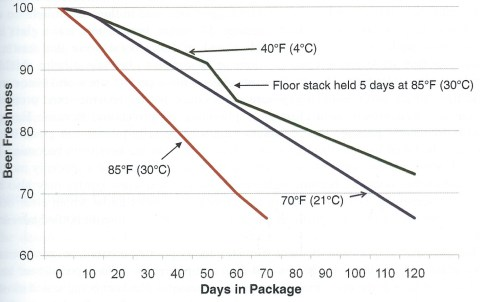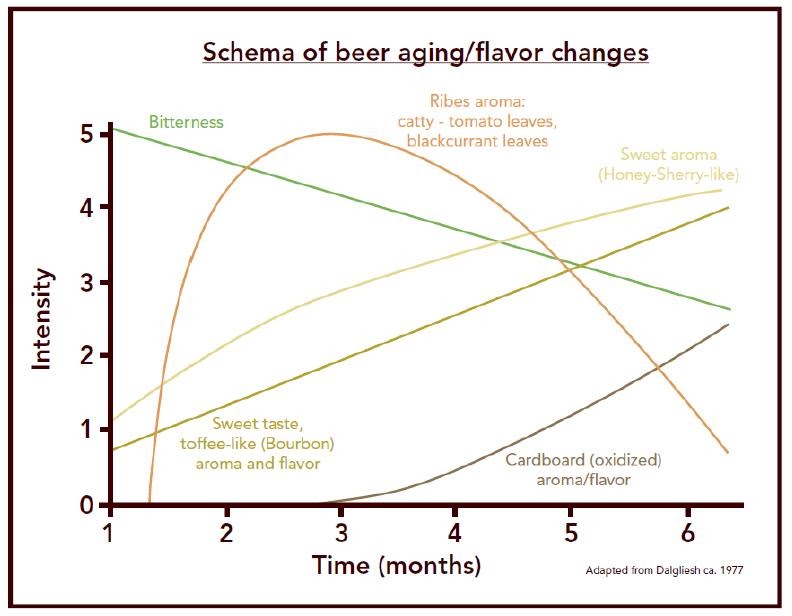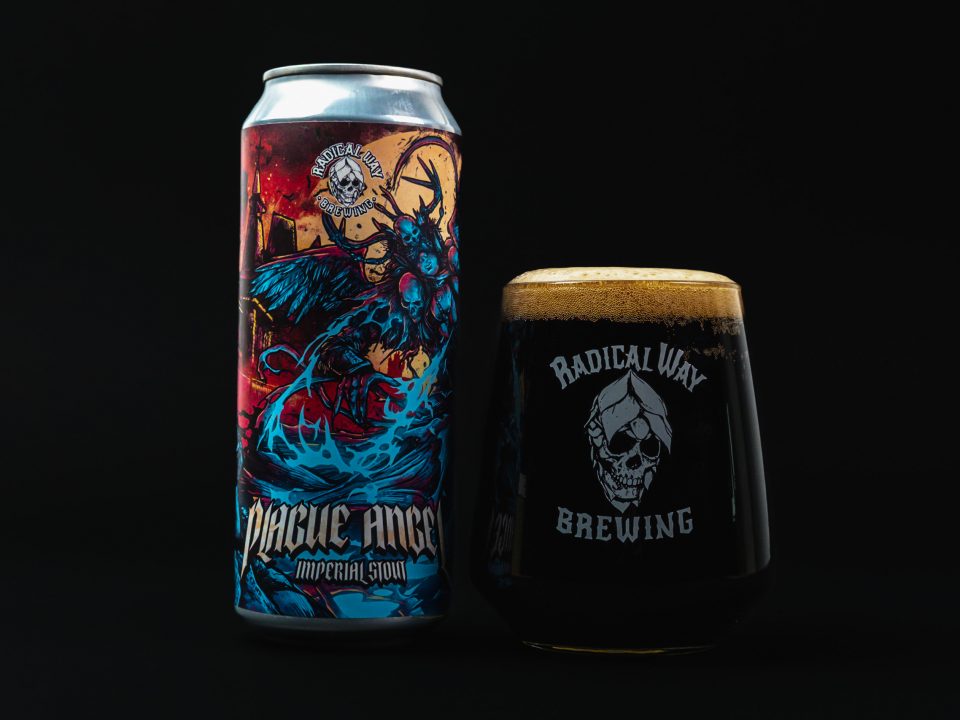Craft Beer Storage

Craft Beer and Food Pairing: Part 2
February 5, 2021
Don’t be afraid of the dark
April 11, 2022When beer is consumed fresh, your tasting experience will be richer and accompanied by more intense aromas and sharper tastes. A fresh beer’s characteristics, such as its flavor, mouthfeel, body and aromas are exactly as its brewer designed them to be. However, this is where things get challenging. Since beer is an organic product, the moment its packaging is complete, its flavor will slowly but surely start to deteriorate. While this is unavoidable, it is no cause for concern: correct storage of your beer will prolong the amount of time it remains fresh.
Creating a perfect storage environment has always been in our plans because preserving the quality of our beers is crucial to us. Over the last month here at Radical Way we have been working on creating our very own cold room, which is now officially operational! This will ensure that our beers will be kept at the maximum possible freshness until they reach you.
In this blog post we will explore the different factors which affect a beer’s freshness. We will also discuss some good practices you can adopt to guarantee that you will always get the most taste out of your brews, keeping your beer fresh for its full shelf life!
Main factors affecting beer’s freshness
1. Temperature
The main culprit behind the decay of a beer’s taste and freshness is, unsurprisingly, high temperatures. When heat is introduced to beer it accelerates the chemical reactions taking place inside it which are responsible for deteriorating the aroma-producing hops and oils.

The best way to hinder these reactions from spoiling your beer is by storing it in a cool environment. As Figure 1 shows, the cooler the storing temperature, the longer the beer’s freshness is retained relative to its original state. Beer freshness will decrease at faster rates when kept at, or above, room temperature. This means that if your beer has been kept at higher temperatures, you will have to consume it much earlier if you want to taste it in a fresh state. By storing it in your fridge, you can prolong your beer’s life by several months!
Storing beer not only at a cool, but at a stable temperature is equally important. Figure 1 shows the effect of taking a beer which was previously refrigerated and keeping it at room temperature for 5 days before putting it back in the fridge. This short interval outside the fridge has a measurable effect on its freshness, however putting it back in the fridge counteracts it. In some instances, beer cannot be kept constantly refrigerated, but try to place it in the fridge as soon as you can.
A common misconception when it comes to storing beer is that beer should be stored in ice cold temperatures. While this can be the case for light, mass-marketed macro brews, it doesn’t hold for craft beers. Beer is, after all, a liquid and although its freezing temperature is lower than that of water (around -2C but can be even lower for higher ABV% beers), it will still freeze at the temperatures household freezers are kept at. The aftermath of frozen beers in a freezer is definitely not an easy cleanup! Freezing beers also has a profound effect on taste, as it masks the character of hops, making it taste bland and selfless.
2. Exposure to sunlight
Sunlight is another enemy of fresh beer. Light provides the necessary energy to drive a reaction that transforms and releases some of the Sulphur compounds found in hops. Sulphur compounds often have strong, unpleasant aromas, which are used for self-defence by animals like skunks. This is the origin of the term “skunking”, which describes beer whose freshness has been compromised by sunlight.
The photochemical reaction resulting in skunking is very quick; within just a few minutes of exposure to sunlight, a heavily hopped beer can start giving off-tasting aromas and flavors. As a result, the more hoppy a beer is, the more vulnerable it is to skunking. Beer styles such as pale ales therefore need extra care in their storage and should be consumed closer to their production.
This is particularly true for beers stored in bottles, since bottles are penetrated by sunlight. A beer bottle’s glass color represents the wavelength of sunlight it transmits. For example, green bottles only allow green light through. It turns out that blue, green and ultraviolet light are the most damaging to beer, while brown glass offers more protection from skunking (up to a few hours of light exposure before skunking starts taking place).
A logical way to avoid skunking is to therefore buy beers packaged in kegs, cans, and opaque bottles. Refer to our Craft Beer in a Can blog post, where we discussed this in more detail!
3. Oxygen
Oxygen is a factor affecting beer freshness whose role is mostly confined to the brewing process itself. Although oxygen is a desirable element before fermentation (as it allows healthy yeast growth), its desirability ends as the fermentation process ends, after which it is considered a contaminant.
This is a problem mainly faced by homebrewers, as oxygen can be introduced when transferring beer from one vessel to the other (primary to secondary, fermentor to bottle or keg etc). Some oxygen will always remain inside the beer container.
Once a beer has been packaged, its packaging type also determines the extent to which oxygen will affect it. Bottled beer allows tiny spaces through which air can seep. Bottles with corks are slightly better than bottles with caps, but oxygen will still penetrate them. On the other hand, cans are fully sealed and protected from oxygen until they are opened.
Oxygen alters a beer’s flavor through oxidation, as it reacts with organic molecules present in the beer (such as alcohols, hop bitter acids and aromatic compounds). The chemical produced through oxidation of beer leads to the classic wet paper or cardboard aromas and tastes associated with stale beer.
4. Beer Style
Lighter beers and heavily hopped, hazy or unfiltered beers have shorter shelf lives and their storage requires more care. Try to drink these beer styles within three months after their packaging. Refrigerating a typical IPA can extend its shelf life to as much as a year, but generally, its flavor will begin to decrease after the first 3-4 months.
Darker, heavier beers such as stouts and porters retain their original flavour for longer, with a shelf life of approximately six months.
Finally, barrel-aged beers can sometimes even improve in flavor the longer they stay in storage. This is due to their higher alcohol content and the time needed to reach their peak flavor as their taste continues to evolve. Some oxidation can even be positive for barrel-aged beers. Barrels allow small amounts of oxygen to seep through and promote chemical reactions.
5. Time
Beer is “alive”, and is constantly undergoing chemical and biological reactions and processes which continue throughout its storage. The main effects of time on beer include a constant decrease in bitterness, an increase in sweet honey-like tastes and aromas and increasing levels of an aroma of wet cardboard. In addition to the taste and aroma changes, there is a subsequent decrease in colloidal stability as well as an increase in colour during storage.
Once a beer is opened, the more it is left exposed to the air, the less carbonated it will become, the more skunked it can become and the flatter or more off its taste will be.

Creating a good storage environment
With this information in mind, here are some good practices you can follow to maintain your beer’s quality:
- Keep your beer as cold as you can, without freezing it, for as long as you can. 2-4 degrees Celsius is ideal to refrigerate most beers!
- The less time your beer spends at room temperature the better, so store it in your fridge as soon as you can.
- Keep your beer at a stable temperature, without repeatedly taking it in and out of your fridge or cooler.
- Store your beer in a dark environment, away from sunlight.
- Buy beer in cans: they are unaffected by sunlight and are a complete seal to keep out oxygen.
- Store your beer standing up: this makes the sediment from yeast settle to the bottom of your bottle/can and avoids it coming into contact with more of the beer.
- Storing beer on its side can create a “yeast ring”, a line of sediment that sticks to the bottle/can and negatively impacts the appearance and taste of your beer.
- For bottles, storing beers upright also minimizes contact with the air.
- Be aware of the particularities of the style of beer you are storing.
- For example, stouts can be aged but IPAs should be consumed as fresh as possible.
Conclusion
Beer should always be consumed fresh so that you can fully experience its taste and aromas and be sure that they will not be compromised by sunlight, oxygen or high temperatures. Keep in mind that, as summer is here, some of these factors will become even more important!
Armed with these tips for good beer storage practices, you can now protect and preserve your beer’s freshness!!




